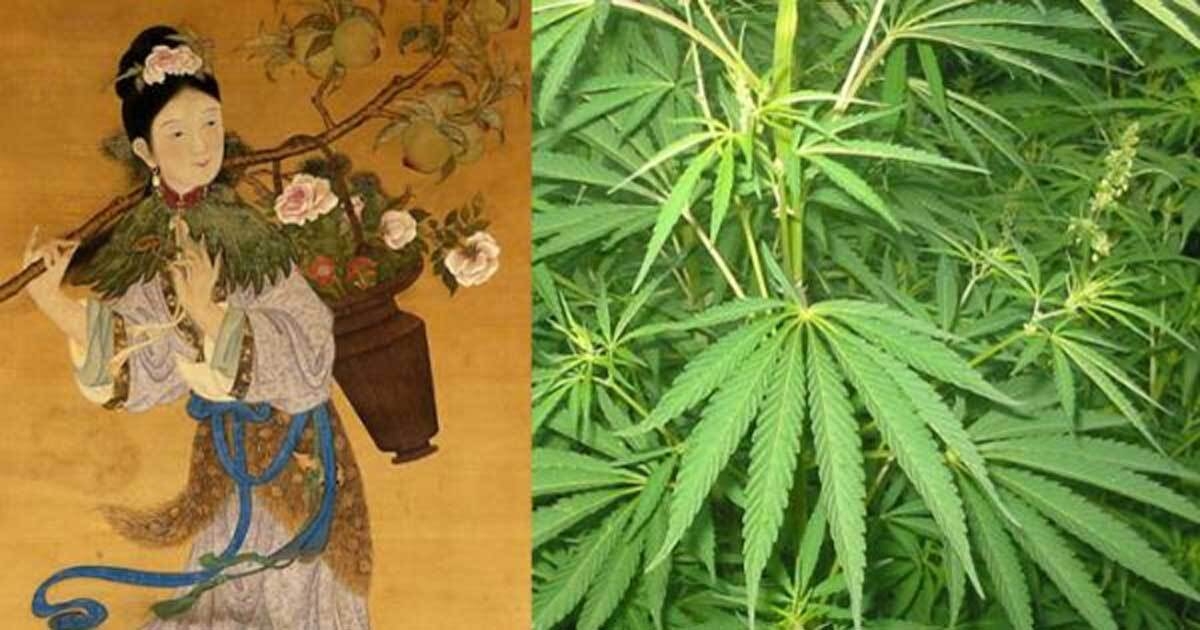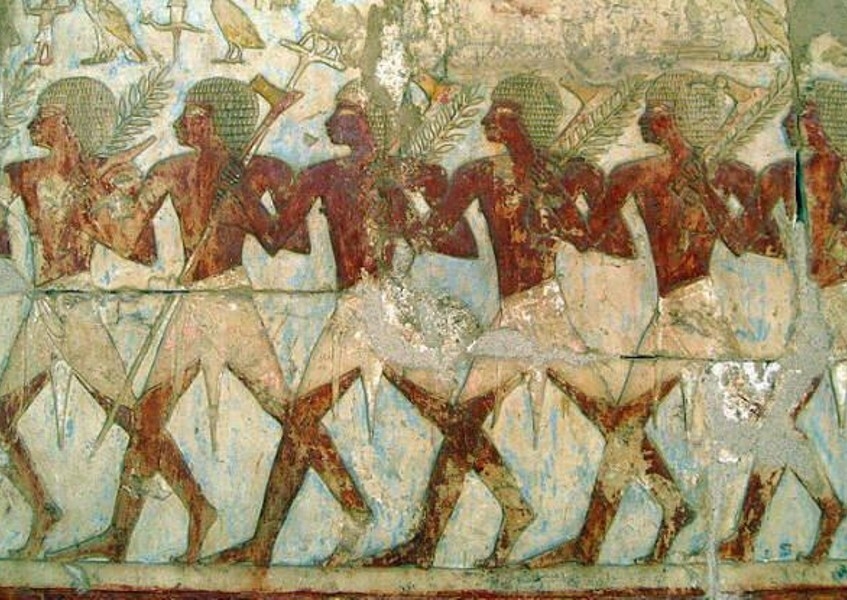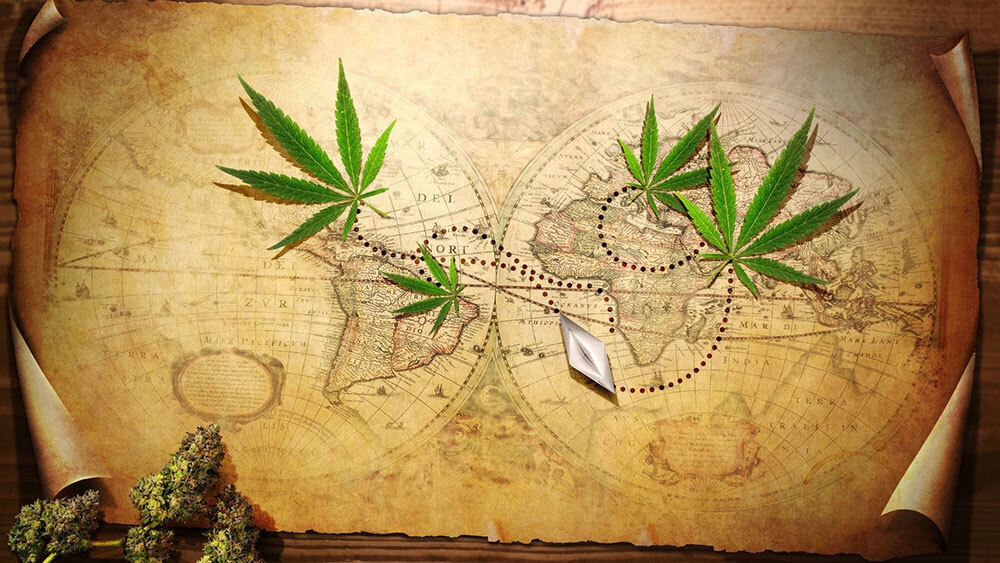Anxiety - History of Cannabis
3/2/2021 7:40 AM
Cannabis Through The Ages in Canada
Marijuana was only made legal in 2018 but people all over the world have been using it to treat different illnesses for thousands of years. This resilient plant grows so easily that it was used as a main food source, to make clothing, and of course, for its calming abilities. Everything seemed to be going well for this resilient plant until the war on drugs in the 1970s’. So, what happened over this broad expanse of time?
Where It All Began
 The cannabis plant has been around for as long (or longer) than humans have. The first documented use of this popular plant was 6000 years ago in China. It was considered one of the 5 grains and one of the major food groups at the time. More than a thousand years later we would finally see the first record of marijuana being used as a medicinal drug. Chinese Emperor Shen Nung, also known as the father of Chinese medicine, recognized it as a treatment for more than a hundred illnesses. At this time, it was used as a treatment for everything from gout to malaria, and even as a way to combat absent-mindedness. After this first documented case it spread all over the world. It soon made its way to Korea, India, and Eastern Africa.
The cannabis plant has been around for as long (or longer) than humans have. The first documented use of this popular plant was 6000 years ago in China. It was considered one of the 5 grains and one of the major food groups at the time. More than a thousand years later we would finally see the first record of marijuana being used as a medicinal drug. Chinese Emperor Shen Nung, also known as the father of Chinese medicine, recognized it as a treatment for more than a hundred illnesses. At this time, it was used as a treatment for everything from gout to malaria, and even as a way to combat absent-mindedness. After this first documented case it spread all over the world. It soon made its way to Korea, India, and Eastern Africa.  What Happened Next?
What Happened Next?
After this original discovery, the cannabis plant went global. Different countries found different uses for it over the years. These are just a few of the many places that utilized them but possibly the most prominent in text. Middle East: After around 800 AD hashish (a purified form of cannabis smoked with a pipe) became popular all over Asia and through the Middle East. This was largely due to the spread of Islam in their religion. The Quran forbids drinking and other intoxicating substances but does specifically say that cannabis belongs to that group of taboo items. India: At around the same time India began making a marijuana beverage called bhang. It was made by crushing the leaves, seeds, and flowers of the lowest-quality plants. The high was barely noticeable but it was said to help with sunstroke and indigestion. This common drink was not the only form of marijuana they created at this time though. On the other side of the spectrum, they made Charas which is the highest quality. It is a strong form of hashish that was very expensive as it was made from crops grown on mountain ranges of up to 7000 feet. Scythia: Scythia no longer exists but was a part of Eurasia nestled between Danube and China. Cannabis was mainly used as a ritualistic herb. They used it to take steam baths and burned the seeds during burials. Egypt: The first record of cannabis use in Egypt was around 1500 BC. An ancient papyrus was found that detailed how marijuana was a useful way to treat inflammation. Brazil and Portugal: The Portuguese brought slaves to Brazil in the 16th century and the slaves brought marijuana with them. The seeds were sewn into the clothing and planted when they arrived. It grew so well that pretty soon it was growing all over the country. The reason Portugal was so lenient with marijuana crops was that the queen used it
herself.
 The Voyage to The New World
The Voyage to The New World
The Spanish are known for being the first to bring cannabis to the new world. They grew this hardy plant for its strong fibers that could be used for clothes, bags, and ship rigging. In Britain, this became the most important plant because hemp ropes
were incredibly strong and durable even when wet. In 1830, Sir William Brooke O’Shaughnessy, an Irish doctor was studying in India when he found that cannabis could help with stomach pain and the terrible effects of cholera. By the end of the 1800s marijuana extracts could be found in pharmacies across the United States and England.
The War on Drugs
Hemp made a huge splash in North America and by 1890 had replaced cotton as the most profitable crop. At this time these intoxicating plants were not grown for recreational purposes but as clothing and rope. 1910 began the long years of the war on drugs. In 1912 they banned opium and in 1914 stated that the use of drugs (even cannabis) was now illegal. For some reason, this law didn’t actually get put into effect until 1938, over 20 years later. In the 1920’s marijuana finally became popular recreationally but mainly in the jazz world. Clubs called “tea pads” began to open everywhere and as the patrons did not disturb the community it was not yet seen as a social threat. During this time, it was also still being used medically to treat nausea, rheumatism and to help with labor pains. In 1930 the U.S. Federal board of Narcotics began to find a way to portray marijuana as an extremely addictive substance that would cause users to become violent. This was referred to as “reefer madness.” This campaigning was so successful that by 1931 it was already illegal in 29 states. They took a bigger step in 1937 by imposing the Marijuana Tax Act which criminalized cannabis across the whole nation. The first person to ever be prosecuted under this act was a 58-year-old farmer named Samuel Caldwell. They sentenced him to 4 years of hard manual labor only one day after this act was passed. The Marijuana Tax Act was replaced with the Controlled Substances Act in 1970. This classified marijuana, heroin, and LSD as schedule 1 drugs. They were no longer accepted as having any sort of medical use and were seen as having the strong potential of abuse. This climate that Reagan created of “zero tolerance” led to stricter laws and mandatory jail time if caught carrying any.
Renewed Interest in Cannabis
 s more is becoming known about the healing properties of marijuana the more accepted it is becoming. In 1996, California passed the Compassionate Use Act which legalized this green herb for people with severe or chronic illnesses. They were the first state to do so but were slowly joined by 29 other states. Forward to nearly 20 years later where 11 states have legalized marijuana for medical and recreational purposes. Today you can walk into any dispensary and find the perfect strain in seemingly-endless ways to reap the benefits. If you don’t feel like leaving your house you can even get it delivered directly to your door.
s more is becoming known about the healing properties of marijuana the more accepted it is becoming. In 1996, California passed the Compassionate Use Act which legalized this green herb for people with severe or chronic illnesses. They were the first state to do so but were slowly joined by 29 other states. Forward to nearly 20 years later where 11 states have legalized marijuana for medical and recreational purposes. Today you can walk into any dispensary and find the perfect strain in seemingly-endless ways to reap the benefits. If you don’t feel like leaving your house you can even get it delivered directly to your door.
Posted in News
By
admin admin
Post Comments






